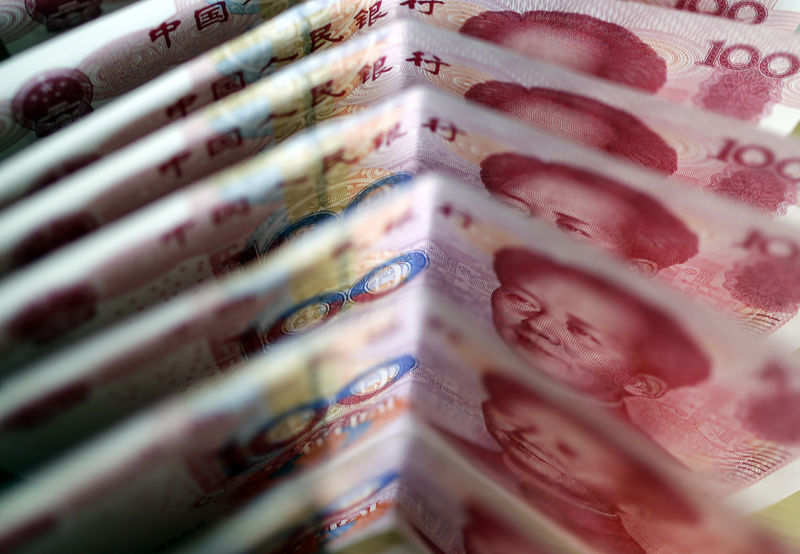 © Reuters. One-hundred Yuan notes are seen in this picture illustration in Beijing
© Reuters. One-hundred Yuan notes are seen in this picture illustration in BeijingBy Samuel Shen and Andrew Galbraith
SHANGHAI (Reuters) – China is suspending approvals for a niche overseas investment product in Shanghai known as the QDLP scheme and urging license holders, such as JPMorgan (NYSE:) Asset Management and Aberdeen Standard Investments, to be “low profile” in marketing it, sources said.
The window guidance, targeting one of a handful of overseas investment channels for mainland investors, signals Beijing’s renewed worries over capital outflows as a rapidly-escalating Sino-U.S. trade war hurts its economy and the yuan currency.
China’s foreign exchange regulator has also not issued fresh quotas in the past three months under another overseas investment scheme, the Qualified Domestic Institutional Investor, or QDII, data from the State Administration of Foreign Exchange (SAFE) showed.
In recent weeks, the Shanghai Municipal Financial Service Office (FSO), which oversees the Qualified Domestic Limited Partnership (QDLP) program, has asked license holders to be “tight-lipped” on the business in public, and to the media, three executives at fund management companies said.
New applicants for the businesses are told to wait, two sources said.
“That should be no surprise as the SAFE quota to FSO is very limited,” due to the pressures on the capital account, said one executive.
Both the FSO and the SAFE did not respond to faxed questions seeking comment.
JPMorgan Asset Management declined to comment when asked about the guidance, and Aberdeen did not immediately respond.
The QDLP and QDII schemes permit China-based local and foreign funds to raise money from domestic investors for offshore investments.
The tightening grip on QDLP represents a policy reversal by regulators, who resumed the scheme in February after a two-year hiatus against the backdrop of a strengthening yuan.
Global asset managers, including JPMorgan AM, Allianz (DE:), BNP Paribas (PA:), AXA, Robeco and Mirae Asset, have been awarded QDLP licenses this year. The SAFE said in April it would expand the total quota for the QDLP program.
From 2013 to 2015, Shanghai awarded QDLP quotas worth a combined $1.23 billion to 15 asset managers.
China also resumed the QDII scheme in April after a three-year suspension, but it ground to a halt again in July, as the yuan started to slide.
The yuan
It is down nearly 10 percent since late March, when the first of a series of U.S. President Donald Trump’s tariffs on Chinese imports was announced.
China’s attempts to deflect capital outflow pressures could be precautionary. The tightly managed yuan is shielded by a host of regulatory controls on retail and institutional purchases of foreign currency and China has seen few signs yet of the kind of capital flight experienced during the 2015-16 market turmoil.
But with its FX reserves close to falling below the psychological $3-trillion mark and having created numerous channels, such as the Bond Connect and Stock Connect schemes, to allow movement of portfolio investments in and out of China, Beijing is understandably wary of giving investors a reason to sell down yuan assets.
Ken Cheung, a senior Asian FX strategist at Mizuho Bank Ltd said, “The overshooting of (yuan) depreciation and capital outflow pressure will be lethal to China growth and financial stability.”
Source: Investing.com


























